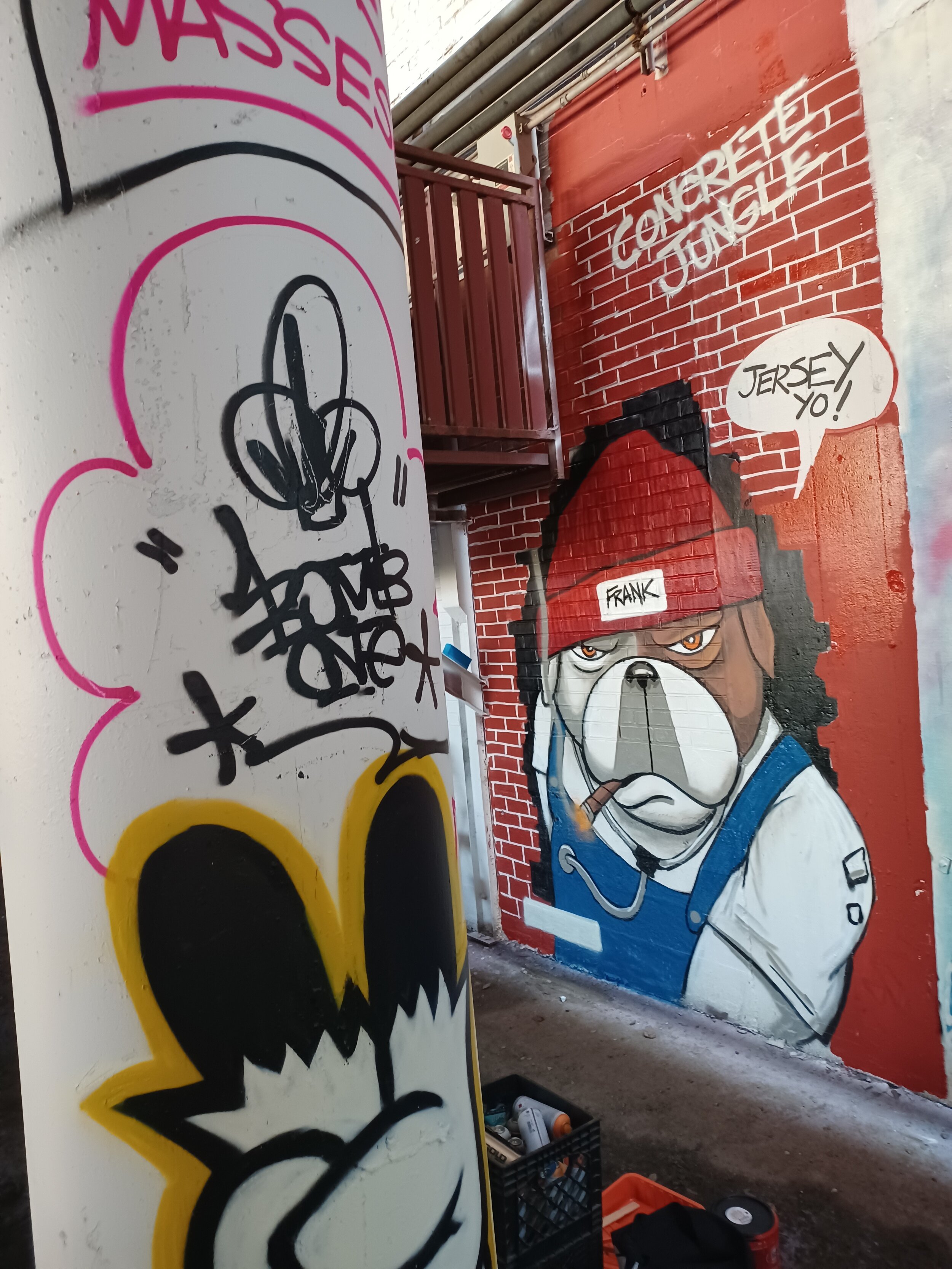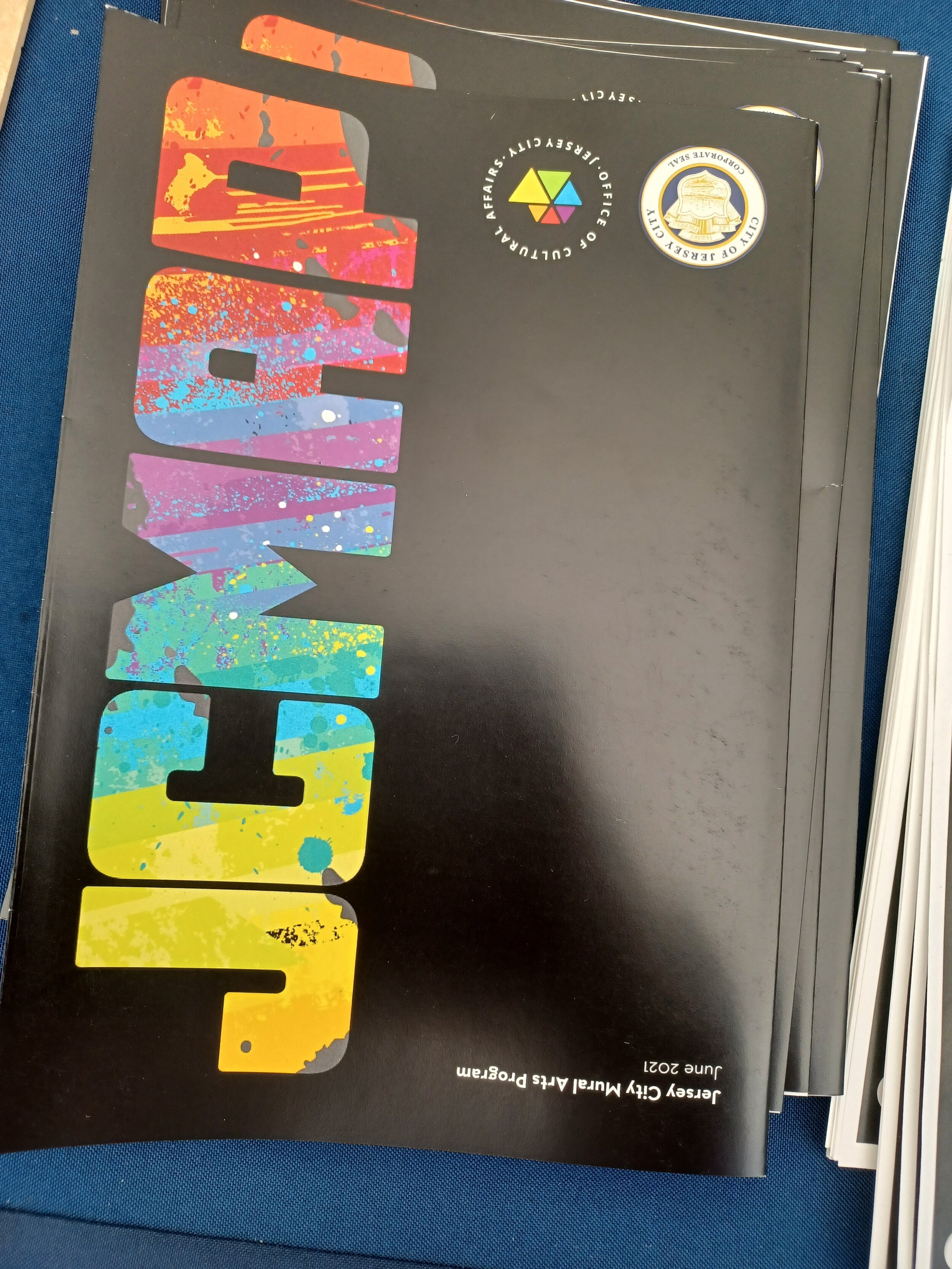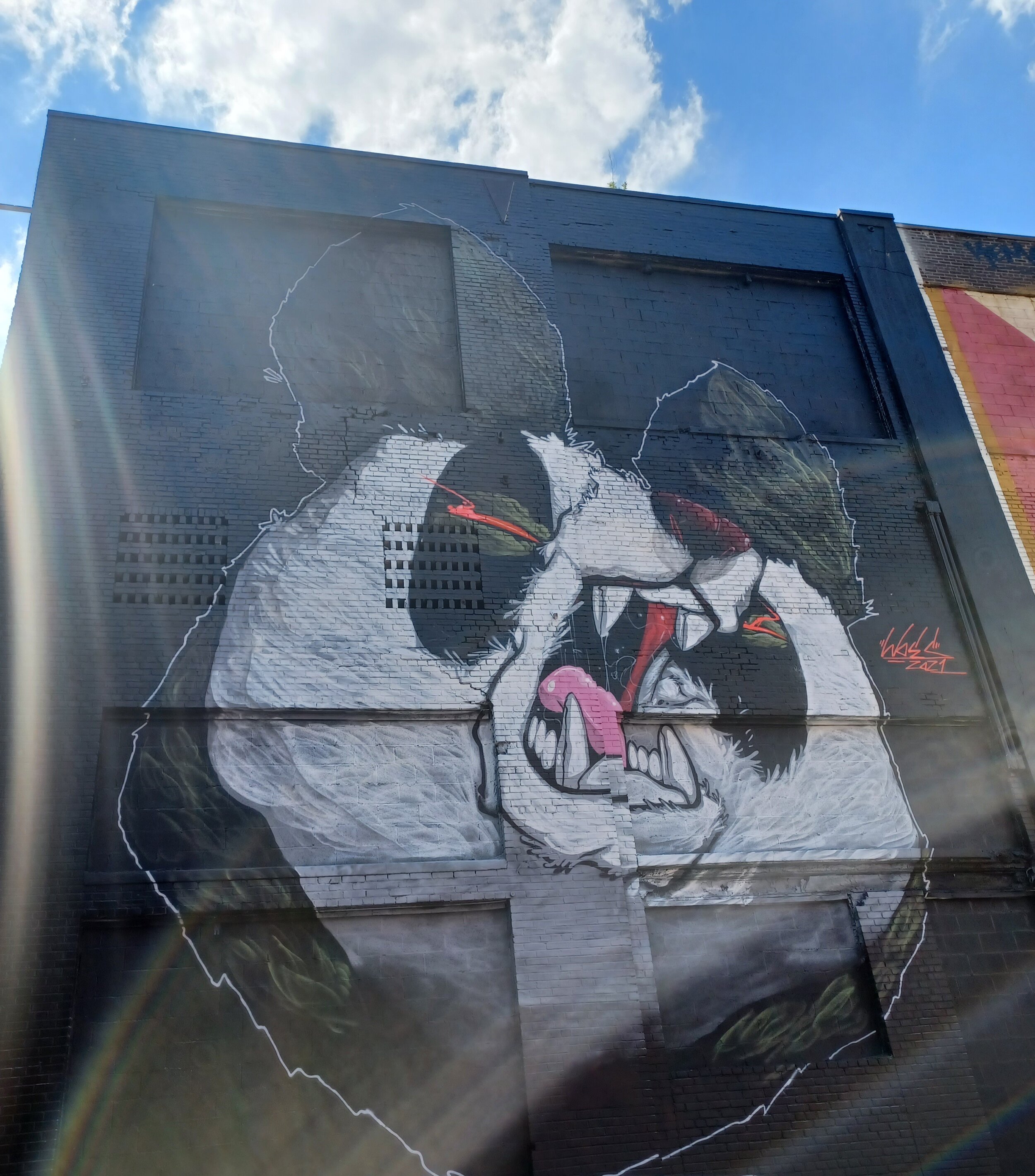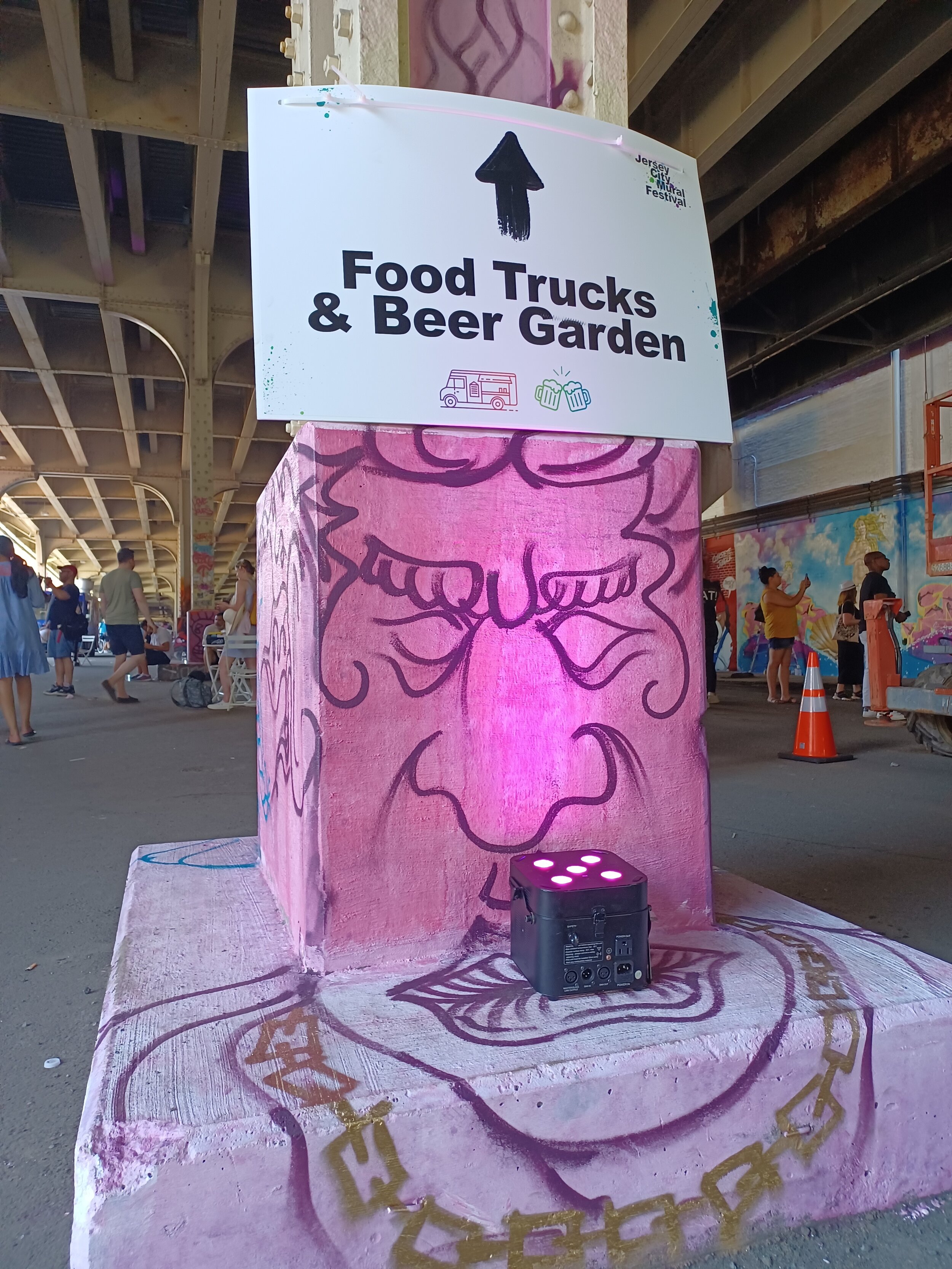“The secret of change is to focus all of your energy not on fighting the old, but on building the new.” - Socrates
Some of you reading this post, may be more familiar with the early rock n’ roll culture profiled in 1973 classic coming of age comedy, American Graffiti. Set in Modesto, CA; the film received widespread critical acclaim and was nominated for the Academy Award for Best Picture. While no one in this “historically significant” film chronicling “American” teenage life looked like me, there was another movement that was brewing 3,000 miles away by teenagers who did. While it would take 2 decades before this movement received any mainstream awards or recognition, it was during this era that the seed that would grow into my love for street art was planted.
Artist featured at the Jersey City Mural Festival
Growing up with close male cousins in the 80s and 90s, I was surrounded by hip hop culture. Those were the days when all the guys wanted to look like LL Cool J with the swag of Public Enemy’s Chuck D (https://www.vulture.com/article/new-york-rap-crew-guide.html). The days when rap artist D-Nice was simply “taking out you suckers and you don’t know how [he] did it” and had no idea that 20+ years later he would become a world famous DJ whose “Club Quarantine” IG Live would help us dance our way through a global pandemic. A time that when my older cousin wasn’t listening to NWA or the Juice Crew, he was writing rhymes and break dancing. Emceeing, break dancing, deejaying, graffiti art and beatboxing were at the heart of this cultural shift being fueled by black & brown youth.
Graffiti is writing or drawings made on a wall or other surface, usually without permission and within public view. Graffiti ranges from simple written words to elaborate wall paintings, and has existed since ancient times, with examples dating back to ancient Egypt, ancient Greece, and the Roman Empire.
The link between hip hop and graffiti evolved as a competition, much like the breakdance moves that my cousin practiced on cardboard in my grandparents’ backyard in his early teens. Graffiti flourished in hip hop culture as a way to tag your “crew” on the subways of New York City. In the late 1970s, graffiti culture started to be linked with hip-hop. With artists being featured in music industry publications like Spin and Rolling Stone, it wasn’t long before Graffiti took on a life of its own outside the industry.
Mostly tagging his graffiti art under the moniker of “SAMO,” Jean-Michel Basquiat is an American artist who rose to success during the 1980s as part of the Neo-expressionism movement. One of the most famous artists that grew out of that era, Basquiat began life as a street artist and then took that energy and spirit into his studio work while addressing social issues.
Jersey City Mural Festival
Graffiti predates street art and today’s street art draws its inspiration from graffiti. Thirty years after his passing, Basquiat is a permanent fixture in 20th-century art consciousness as his work continues to inspire street artists around the world. A rebel, poet, musician and graffiti artist in the late 1970s, Basquiat became notorious for his trademark style - obsessive scribbling, curious symbols and skull-laden imagery.
I was excited to check out the street art at Jersey City’s Mural Festival. I loved how some artists took their cue from graffiti in making the walls in the city’s historical Hamilton Park neighborhood their canvass as a statement against existing establishment, with some of the pieces highlighted carrying some overarching message for the public.
Me in front of street art in Colombia







